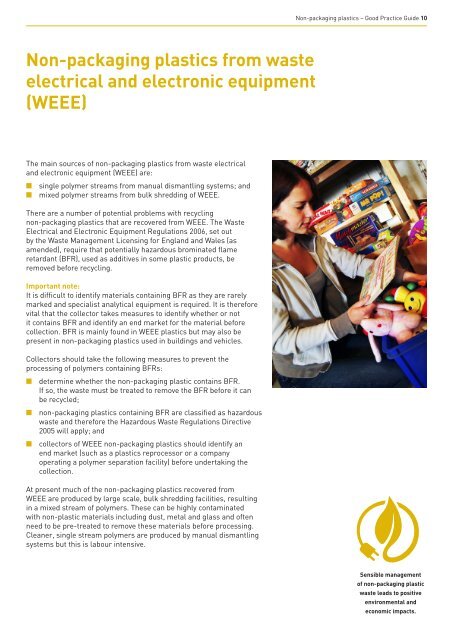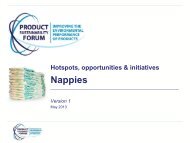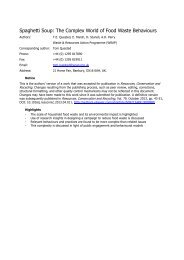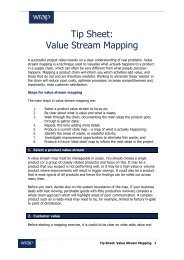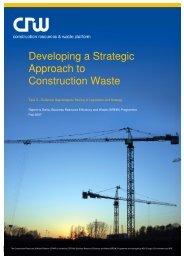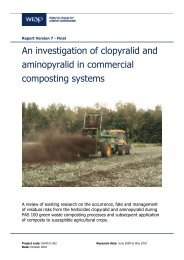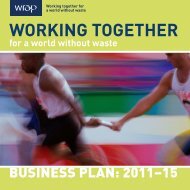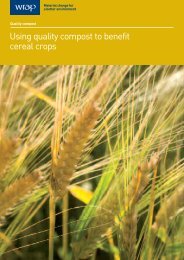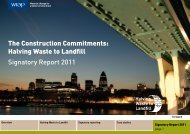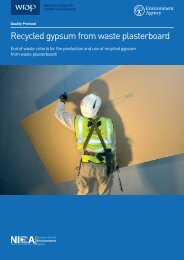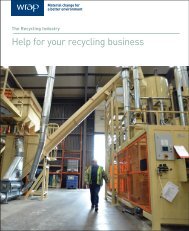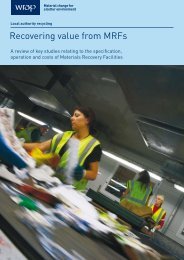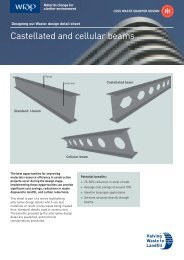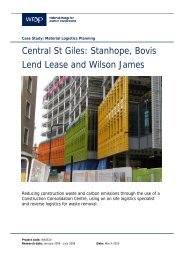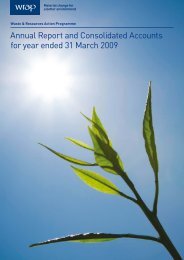non-packaging plastics environmental good practice guide ... - Wrap
non-packaging plastics environmental good practice guide ... - Wrap
non-packaging plastics environmental good practice guide ... - Wrap
- No tags were found...
Create successful ePaper yourself
Turn your PDF publications into a flip-book with our unique Google optimized e-Paper software.
Non-<strong>packaging</strong> <strong>plastics</strong> – Good Practice Guide 10Non-<strong>packaging</strong> <strong>plastics</strong> from wasteelectrical and electronic equipment(WEEE)The main sources of <strong>non</strong>-<strong>packaging</strong> <strong>plastics</strong> from waste electricaland electronic equipment (WEEE) are:n single polymer streams from manual dismantling systems; andn mixed polymer streams from bulk shredding of WEEE.There are a number of potential problems with recycling<strong>non</strong>-<strong>packaging</strong> <strong>plastics</strong> that are recovered from WEEE. The WasteElectrical and Electronic Equipment Regulations 2006, set outby the Waste Management Licensing for England and Wales (asamended), require that potentially hazardous brominated flameretardant (BFR), used as additives in some plastic products, beremoved before recycling.Important note:It is difficult to identify materials containing BFR as they are rarelymarked and specialist analytical equipment is required. It is thereforevital that the collector takes measures to identify whether or notit contains BFR and identify an end market for the material beforecollection. BFR is mainly found in WEEE <strong>plastics</strong> but may also bepresent in <strong>non</strong>-<strong>packaging</strong> <strong>plastics</strong> used in buildings and vehicles.Collectors should take the following measures to prevent theprocessing of polymers containing BFRs:n determine whether the <strong>non</strong>-<strong>packaging</strong> plastic contains BFR.If so, the waste must be treated to remove the BFR before it canbe recycled;nn<strong>non</strong>-<strong>packaging</strong> <strong>plastics</strong> containing BFR are classified as hazardouswaste and therefore the Hazardous Waste Regulations Directive2005 will apply; andcollectors of WEEE <strong>non</strong>-<strong>packaging</strong> <strong>plastics</strong> should identify anend market (such as a <strong>plastics</strong> reprocessor or a companyoperating a polymer separation facility) before undertaking thecollection.At present much of the <strong>non</strong>-<strong>packaging</strong> <strong>plastics</strong> recovered fromWEEE are produced by large scale, bulk shredding facilities, resultingin a mixed stream of polymers. These can be highly contaminatedwith <strong>non</strong>-plastic materials including dust, metal and glass and oftenneed to be pre-treated to remove these materials before processing.Cleaner, single stream polymers are produced by manual dismantlingsystems but this is labour intensive.Sensible managementof <strong>non</strong>-<strong>packaging</strong> plasticwaste leads to positive<strong>environmental</strong> andeconomic impacts.


